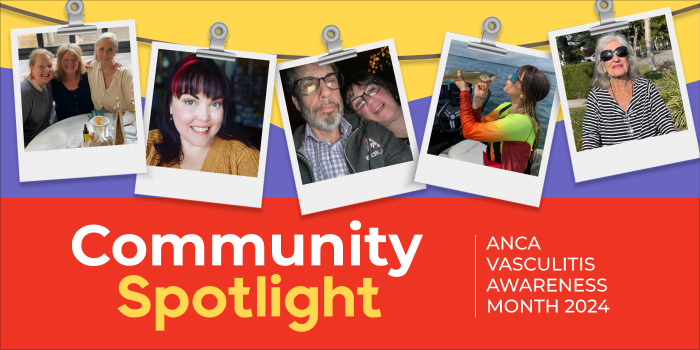Going from zero to 60 in 6 months of living with ANCA vasculitis
Written by |


Sarah Wellings, left, smiles with Isla Bell before her ANCA vasculitis diagnosis. (Photos courtesy of Sarah Wellings)
This is Sarah Wellings’ story:
Last night I dreamed I was running again. It seems my running days are over. Don’t get me wrong, I was no athlete when I was healthy, but I could run to catch a bus! I now do a lovely gentle exercise class. Positive aspects.
I live in London and have been diagnosed with granulomatosis with polyangiitis, PR3-ANCA vasculitis for six months and counting, along with added complications, which is par for the course. It’s been quite the journey.
I wouldn’t be where I am now without the love and support of family, friends, and, of course, the U.K.’s National Health Service, all of whom have been my lifeline as I aim for remission. I am fortunate to have a good sense of humor, which I draw upon when needed. I think I have always used it to deflect in certain situations. That said, I do go to the dark side. I’m not on antidepressants for nothing!
It’s fair to say I once took my health for granted.
Living with ANCA vasculitis is challenging. I had to endure its rapid acceleration from a standstill — and all that entailed mentally, emotionally, and physically — and start listening to my body, which I’m getting better at doing. Health professionals have told me to lower my pain threshold on more than one occasion and to get medical help. My hospital stays were a humbling experience on various levels, but a necessity under the circumstances. Coming home is heaven — and a privilege.
Those close to me have also had to adjust to both the positive and negative changes I’ve experienced due to vasculitis. And let us not forget the side effects of medications. I really couldn’t tell you which medications produce which side effects, apart from steroids, unsurprisingly, which cause moon face and mood swings, among other issues. I also have a big appetite. Big. Huge.

Sarah Wellings, now living with ANCA vasculitis, is accompanied by friends Kate Steer and Louise Hudson.
Living and coping with ANCA vasculitis affects my day-to-day tasks: dropping things when preparing food, weight gain, trying to keep on top of taking medications and attending various appointments, fatigue, breathlessness even during a bath, soreness, and tingling in my fingers and thumbs. I also have trouble with dressing and undressing, brain fog and loss of memory when communicating, lack of concentration when reading, low confidence when mixing with other people, managing money, being able to work, planning and following a journey, and simply moving around.
I initially resisted buying a hiking pole (humor me!) and a shopping trolley. My pole has transformed my vasculitis from an invisible disability (well, aside from swellings and rashes, including the “rash” on my nose that turned out to be chocolate from a cappuccino!) to a visible one.
I am currently being seen by the rheumatology, respiratory, hematology, and immunology departments at the hospital. I had my first immunology appointment in April. Hypogammaglobulinemia, or low levels of immunoglobulins, meant I had to be referred from my great local hospital to another one, where I could receive a monoclonal antibody treatment.
There are still unknowns. (I am drafting this from bed, as I feel poorly and exhausted today.) It’s a case of baby steps, but there is always hope with the added support of the vasculitis community everywhere.
In recognition of Vasculitis Awareness Month in May, the ANCA Vasculitis Community Spotlight campaign features a series of stories highlighting the real-life experiences of people affected by vasculitis, written in their own words. Follow us on Facebook and Instagram for more stories like this, using the hashtag #ANCASpotlight, or read the full series.



